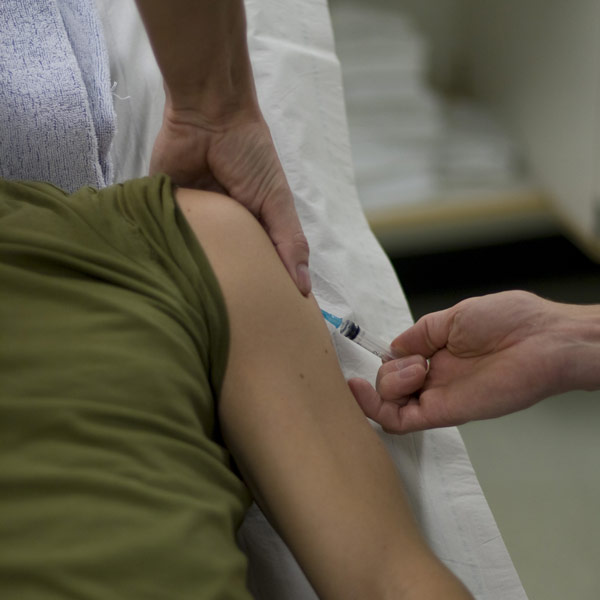
TUESDAY, Aug. 10 (HealthDay News) — Could American patients and health care workers be winning the war against potentially deadly methicillin-resistant Staphylococcus aureus (MRSA) bacteria?
Infections with MRSA that began in hospitals and other health care settings have declined 28 percent in recent years, a new government study of roughly 15 million people finds.
Researchers at the U.S. Centers for Disease Control and Prevention (CDC) report that rates of “invasive” MRSA infections that had their onset in hospitals or other health care facilities declined an average 9 percent annually from 2005 through 2008. Invasive MRSA infections are those that are found in a normally sterile body site, such as the bloodstream.
According to the study, which is published in the Aug. 11 issue of the Journal of the American Medical Association, invasive MRSA infections that were associated with health care settings but began outside, in the community, also declined by about 6 percent annually, for a total of a 17 percent decrease over the four-year period.
“While we don’t know for sure what caused these rates to go down, we’re hopeful and encouraged that the aggressive infection control programs that many hospitals have instituted are having an impact,” said lead author Dr. Alexander J. Kallen, medical officer in the division of Healthcare Quality Promotion at the CDC.
For the study, Kallen and his colleagues evaluated a CDC population-based surveillance system of MRSA infections that covers nine metropolitan areas across the United States. After evaluating all reports of laboratory-identified episodes of invasive MRSA infections, they limited their analysis to infections that began in hospitals or those that began in the community but were associated with a health care setting. MRSA infections associated with health care settings made up 82 percent of the total infections. The researchers did not evaluate community-acquired MRSA infections.
A subset analysis of just bloodstream infections showed even greater decreases: a 34 percent drop in hospital-onset infections, and about a 20 percent decrease in community-onset infections over the four-year period.
The authors of an editorial accompanying the study said that while the findings are encouraging, government surveillance systems should be expanded to more geographical areas and should include all Staphylococcus aureus infections, as well as other important health care-associated pathogens.
“Even if MRSA causes half of all Staph infections, that means that all the other strains of S. aureus are causing the other half, and we need to focus on these infections as well,” said co-author Dr. Daniel J. Diekema, director of the division of infectious diseases at the University of Iowa Carver College of Medicine, in Iowa City. Diekema said broadening the surveillance will require a lot more funding, “but we think it will be well worth it in the long run.”
Another expert in health care-associated infections said the findings confirm what recent smaller studies have shown.
“We were aware from our own data as well as other regional data presented at meetings that MRSA rates have dropped dramatically, but this population-based study is important because it shows that the decline is occurring across broad geographical regions,” said Dr. Daniel J. Sexton, director of the Duke Infection Control Outreach Network, a collaboration between Duke University Medical Center and 39 community hospitals located in Georgia, North Carolina, South Carolina and Virginia.
“It’s unlikely that any one type of intervention is the reason for the decline, because rates have dropped all across these areas, where people are doing all kinds of different things,” Sexton said.
“From the public’s point of view, this is great news, because it shows that infection control strategies really do work,” added Sexton, who is professor of medicine in the division of infectious diseases at Duke University School of Medicine in Durham, N.C.
Since MRSA is primarily transmitted from person to person, Kallen said patients can do their part to help prevent these infections, too.
“Make sure that the people who are taking care of you are practicing good hygiene, especially if they’re doing things like changing dressings on wounds,” he said. While some patients may be reluctant to ask doctors and nurses if they’ve washed their hands, Kallen said, “these days more and more health care workers kind of expect it, and actually welcome it.”
More information
There’s more on MRSA at the U.S. Centers for Disease Control and Prevention.

